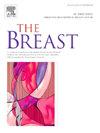内在乳腺癌亚型、乳房x光检查和预后之间的关系:一项基于人群的现实世界队列研究
IF 7.9
2区 医学
Q1 OBSTETRICS & GYNECOLOGY
引用次数: 0
摘要
乳腺癌(BC)作为一种异质性疾病,通常根据其固有亚型进行治疗。乳房x线摄影BC筛查降低了女性的总死亡率。我们的目的是分析不同内在亚型与乳房x线摄影筛查覆盖率(年龄筛查前、年龄筛查后与年龄筛查后)、出勤率(出勤与不出勤)、检测手段(筛查检测与间隔BC)和BC存活率之间的关系。材料和方法我们使用了一个登记的亚群,包括芬兰1995年至2013年间诊断为浸润性BC的所有患者。我们从国家登记处收集筛选结果、生物学特征和生存信息。结果我们纳入了7389例早期BC患者。与腔内a样亚型相比,三阴性BC患者的死亡风险最高(HR: 1.81, 95% CI: 1.52-2.15), BC相关死亡风险最高(HR: 3.16, 95% CI: 2.43-4.10)。大多数三阴性bc是在筛查年龄后被诊断出来的。her2阳性(非腔内)肿瘤最可能是间期肿瘤,而其余亚型最可能是筛查检测到的。间隔期癌症患者的死亡风险高于筛查发现病例(HR 1.40, 95% CI: 1.18-1.68),未参加筛查的患者的死亡风险更高(HR 2.17, 95% CI: 1.75-2.68);在主要亚型中也检测到这种关联。结论在这个真实数据集中,三阴性肿瘤的死亡风险最高,并且这些肿瘤大多数是在筛查年龄之后发现的。在筛查年龄的女性中,筛查发现肿瘤的患者生存率最高,而间隔期肿瘤患者和未参加筛查的患者预后最差。本文章由计算机程序翻译,如有差异,请以英文原文为准。
The association between intrinsic breast cancer subtypes, mammography screening and prognosis: a large population-based real world cohort study
Introduction
Breast cancer (BC) as a heterogeneous disease is routinely managed according to its intrinsic subtypes. Mammographic BC screening reduces overall mortality in females. Our aim was to analyze the association between different intrinsic subtypes and mammography screening coverage (pre-screening-aged, screening-aged vs. post-screening-aged), attendance (attendance vs. non-attendance), and means of detection (screen-detected vs. interval BC) and BC survival.
Materials and methods
We used a subpopulation of a registry including all patients diagnosed with invasive BC in Finland between 1995 and 2013. We collected screening results, information on biological characteristics and survival from national registries.
Results
We included 7389 patients with early-stage BC. Compared to luminal A-like subtype, patients with triple-negative BC had the highest risks of death (HR: 1.81, 95 % CI: 1.52–2.15) and BC-related death (HR: 3.16, 95 % CI: 2.43–4.10). The majority of triple-negative BCs were diagnosed after the screening age. HER2-positive (non-luminal) tumors were most likely interval tumors, while the rest of the subtypes were most likely screen-detected. The risk of death was higher in patients with interval cancers compared to screen-detected cases (HR 1.40, 95 % CI: 1.18–1.68) and even higher among patients not attending screening (HR 2.17, 95 % CI: 1.75–2.68); this association was also detected in major subtypes.
Conclusion
In this real-world dataset, triple-negative tumors had the highest risk of death and majority of these tumors were found after the screening age. In screening-aged females, patients with screen-detected tumors had the best survival, while patients with interval tumors and patients not attending screening had the worst prognosis.
求助全文
通过发布文献求助,成功后即可免费获取论文全文。
去求助
来源期刊

Breast
医学-妇产科学
CiteScore
8.70
自引率
2.60%
发文量
165
审稿时长
59 days
期刊介绍:
The Breast is an international, multidisciplinary journal for researchers and clinicians, which focuses on translational and clinical research for the advancement of breast cancer prevention, diagnosis and treatment of all stages.
 求助内容:
求助内容: 应助结果提醒方式:
应助结果提醒方式:


